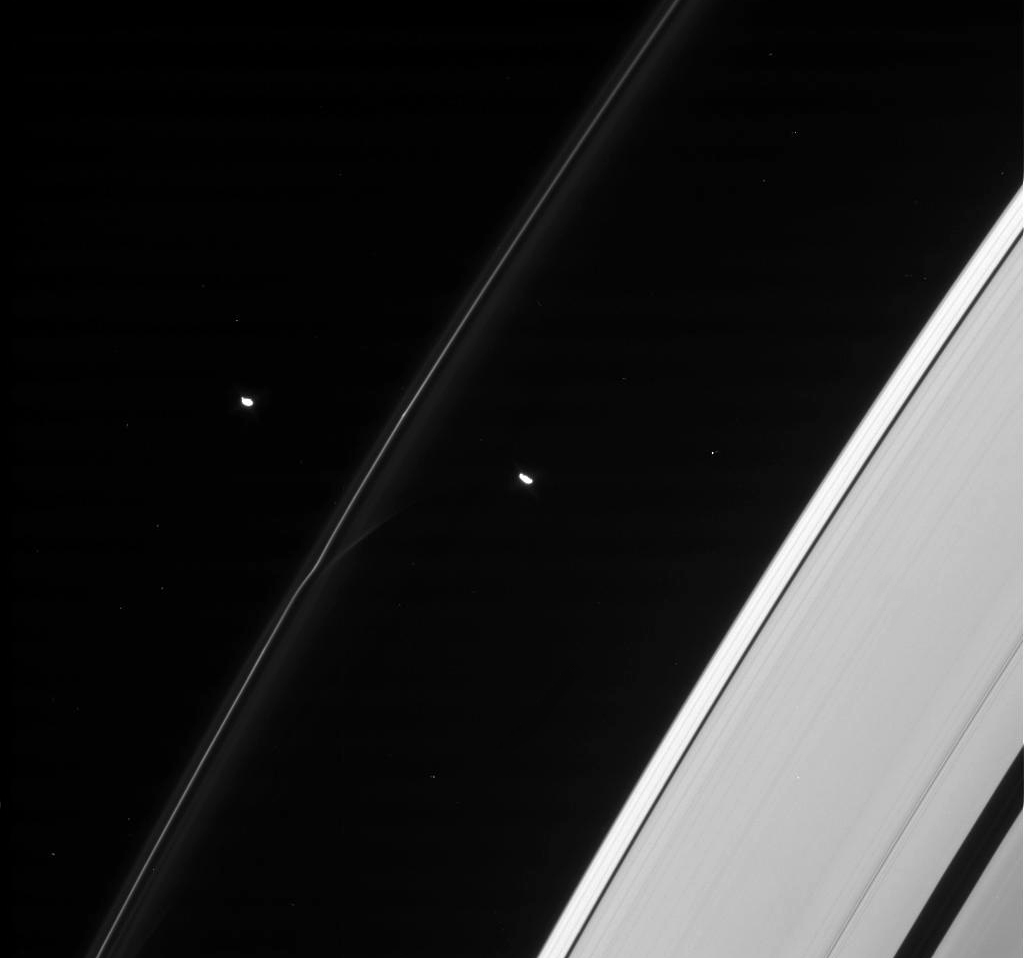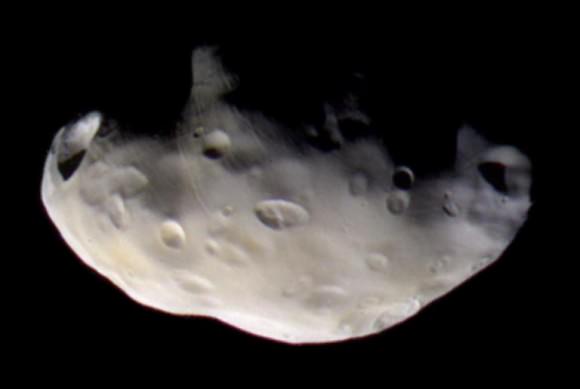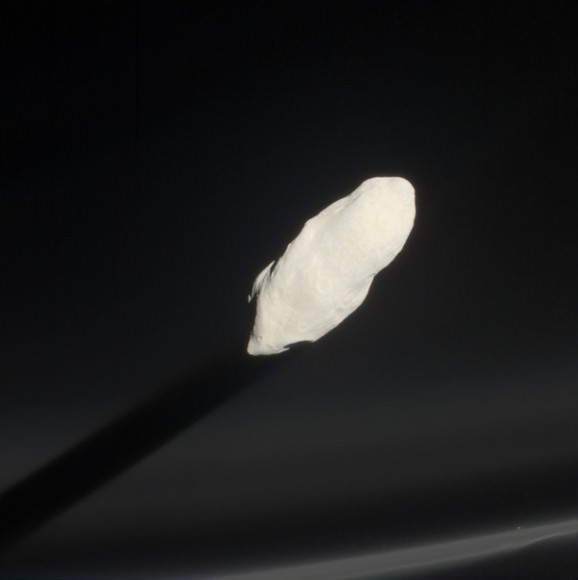Raw Cassini image acquired on Dec. 18, 2012 (NASA/JPL/SSI)
Two of Saturn’s shepherd moons face off across the icy strand of the F ring in this image, acquired by the Cassini spacecraft on December 18, 2012.
In the left corner is Pandora, external shepherd of the ropy ring, and in the right is Prometheus, whose gravity is responsible for the subtle tug on the wispy ring material. (Please don’t blame the moon for any recent unsatisfying sci-fi films of the same name. There’s no relation, we promise.)
Similar in size (Pandora is 110 x 88 x 62 km, Prometheus 148 x 100 x 68 km) both moons are porous, icy, potato-shaped bodies covered in craters — although Prometheus’ surface is somewhat smoother in appearance than Pandora’s, perhaps due to the gradual buildup of infalling material from the F ring.
Check out some much closer images of these two moons below, acquired during earlier flybys:
Here’s Pandora, as seen by Cassini on September 5, 2005:
False-color image of Pandora (NASA/JPL/SSI)
…and here’s Prometheus, seen during a close pass in 2010 and color-calibrated by Gordan Ugarkovic:
Prometheus casting a shadow through F ring haze (NASA/JPL/SSI/Gordan Ugarvovic)
The external edge of the A ring with the thin Keeler gap and the wider Encke gap can be seen at the right of the top image. Both of these gaps also harbor their own shepherd moons — Daphnis and Pan, respectively.
These moons keep their gaps clear, as well as maintain the crisp edge shapes of the nearby rings — hence the term “shepherd.”
Image credit: NASA/JPL/Space Science Institute




How about the three little objets seen on the first image ?
Other satelites, stars or ?
Either stars or pixel noise. Sometimes hard to tell in Cassini images which is which.
Awesome picture though, despite the movies, and the wobble in the ring is that some gravitational effect from one of the moons?
The wobble is caused by Prometheus’ gravity, which often pulls long streamers of material from the F ring. They eventually settle back into place.
How did the tremendous name of”Prometheus” get given to such an insignificant object?
I would imagine the same way a magnificent name like “Rigaud” was given to such an insignificant person! =)
Insults, however funny to the schoolboy are no answer to a question.
Adulthood may chasten you. But judging by your comments there is little hope.
Prometheus was a common thief and made people out of mud, his name just sounds tremendous.
I don’t know if you get your info from Marvel Comics but it seems so.
Byron wrote
Thy Godlike crime was to be kind,
To render with thy precepts less
The sum of human wretchedness,
And strengthen Man with his own mind;
But baffled as thou wert from high,
Still in thy patient energy,
In the endurance, and repulse
Of thine impenetrable Spirit,
Which Earth and Heaven could not convulse,
A mighty lesson we inherit:
Thou art a symbol and a sign
To Mortals of their fate and force;
Like thee, Man is in part divine,
A troubled stream from a pure source;
And Man in portions can foresee
His own funereal destiny;
His wretchedness, and his resistance,
And his sad unallied existence:
To which his Spirit may oppose
Itself—and equal to all woes,
And a firm will, and a deep sense,
Which even in torture can descry
Its own concenter’d recompense,
Triumphant where it dares defy,
And making Death a Victory.
As the shepherding moons process around the ‘F’ ring, the gravitational bulge which follows might surely generate quite the tribo electric charge in the dust and ices given the superconducting temperatures present? I wonder if Cassini has seen any evidence of that? or how those charges might effect the structure of the ring?